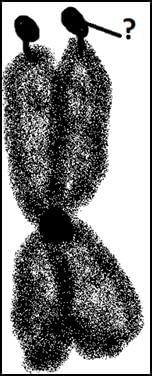NEET Exam > NEET Tests > Test: Nucleus & Chromosomes - NEET MCQ
Test: Nucleus & Chromosomes - NEET MCQ
Test Description
15 Questions MCQ Test - Test: Nucleus & Chromosomes
Test: Nucleus & Chromosomes for NEET 2025 is part of NEET preparation. The Test: Nucleus & Chromosomes questions and answers have been prepared
according to the NEET exam syllabus.The Test: Nucleus & Chromosomes MCQs are made for NEET 2025 Exam.
Find important definitions, questions, notes, meanings, examples, exercises, MCQs and online tests for Test: Nucleus & Chromosomes below.
Solutions of Test: Nucleus & Chromosomes questions in English are available as part of our course for NEET & Test: Nucleus & Chromosomes solutions in
Hindi for NEET course.
Download more important topics, notes, lectures and mock test series for NEET Exam by signing up for free. Attempt Test: Nucleus & Chromosomes | 15 questions in 15 minutes | Mock test for NEET preparation | Free important questions MCQ to study for NEET Exam | Download free PDF with solutions
Detailed Solution for Test: Nucleus & Chromosomes - Question 1
Detailed Solution for Test: Nucleus & Chromosomes - Question 2
Detailed Solution for Test: Nucleus & Chromosomes - Question 3
Test: Nucleus & Chromosomes - Question 4
Which is the primary constriction for every visible chromosome?
Detailed Solution for Test: Nucleus & Chromosomes - Question 4
Detailed Solution for Test: Nucleus & Chromosomes - Question 5
Test: Nucleus & Chromosomes - Question 6
Which type of chromosome has its centromere at its tip?
Detailed Solution for Test: Nucleus & Chromosomes - Question 6
Test: Nucleus & Chromosomes - Question 7
A few chromosomes have non-staining constrictions at a constant location. What are these constrictions called?
Detailed Solution for Test: Nucleus & Chromosomes - Question 7
Detailed Solution for Test: Nucleus & Chromosomes - Question 8
Detailed Solution for Test: Nucleus & Chromosomes - Question 9
Detailed Solution for Test: Nucleus & Chromosomes - Question 10
Detailed Solution for Test: Nucleus & Chromosomes - Question 11
Test: Nucleus & Chromosomes - Question 12
Which among the following is incorrect about nucleus?
Detailed Solution for Test: Nucleus & Chromosomes - Question 12
Test: Nucleus & Chromosomes - Question 13
Which among the following is an incorrect statement about the structure of nucleus?
Detailed Solution for Test: Nucleus & Chromosomes - Question 13
Test: Nucleus & Chromosomes - Question 14
Which among the following is incorrect about chromosomes?
Detailed Solution for Test: Nucleus & Chromosomes - Question 14
Detailed Solution for Test: Nucleus & Chromosomes - Question 15
Information about Test: Nucleus & Chromosomes Page
In this test you can find the Exam questions for Test: Nucleus & Chromosomes solved & explained in the simplest way possible.
Besides giving Questions and answers for Test: Nucleus & Chromosomes, EduRev gives you an ample number of Online tests for practice
Download as PDF




















